Hey there! If you've ever needed to gather medical history from another doctor, you know how important it is to have a clear and concise letter. A well-crafted request not only streamlines the process but also ensures that nothing vital is overlooked. In this article, we'll guide you through crafting the perfect template for your medical history request, making the task a breeze. So, let's dive in and explore how to get the information you need efficiently!

Patient Information
The request for a medical history transfer involves essential patient information, which includes the full name of the patient, date of birth, and social security number (for identification purposes). In addition, the patient's contact details such as phone number and address enhance the accuracy of the request. The sending doctor's name, specialty, and contact information also play a critical role in the process, ensuring that the receiving physician knows where to direct questions. An official request typically specifies the purpose of obtaining the medical history, which may include continuation of care, treatment evaluation, or specialist referral. The comprehensive details ensure seamless communication between healthcare providers, facilitating effective patient management.
Request Purpose
A medical history request from one physician to another is crucial for collaborative patient care. This request typically includes detailed patient information such as the patient's full name, date of birth, and insurance details to ensure accurate identification. The purpose of this request may involve obtaining records related to the patient's diagnosis, treatment history, and any significant medical interventions undertaken. Specific conditions like diabetes, hypertension, or previous surgeries may be highlighted to provide context. Additionally, the request may include a timeframe for the records needed, such as the last five years of treatment. Compliance with HIPAA regulations ensures patient confidentiality while facilitating shared medical knowledge.
Specific Records Needed
Obtaining a patient's medical history is crucial for ensuring continuity of care and informed decision-making in a healthcare setting. When requesting medical records from another doctor, specify essential details such as patient's full name, date of birth, and any relevant dates of previous treatments or visits. Include particular records needed, such as diagnostic test results, treatment notes, and any surgical history, to avoid delays. Stipulate the timeframe for the requested information, typically within 14 days, to align with HIPAA regulations. Ensure clarity about the preferred method of transmission, whether fax, email, or postal service, to streamline receipt and maintain confidentiality of sensitive health information.
Consent and Authorization
Medical history requests require written consent for the release of sensitive patient information. Authorization forms should include patient identifiers such as full name, birth date, and social security number for accuracy. The request must specify the type of records required, such as treatment notes, lab results, or diagnostic imaging reports. It should clearly state the purpose of the request, whether for ongoing care or legal reasons. Include any relevant dates of service (e.g., January 2022 to December 2022) to limit the scope of the request. The controlling statutes, such as HIPAA (Health Insurance Portability and Accountability Act), mandate that all information is handled confidentially. Properly signed consent, including the patient's signature and date of authorization, is crucial for compliance and prompt processing of the request.
Contact Information
A medical history request is essential for ensuring continuity of patient care. In a scenario where a primary care physician seeks to gather comprehensive patient information from a specialist, the letter should include specific details. Beginning with the requester's contact information, including their clinic's name, address, phone number, and email ensures clear communication. Next, the patient's information is crucial, encompassing full name, date of birth, and any specific identifiers such as medical record number. The letter should also emphasize the necessary documents required, such as previous treatment history, diagnosis, medications prescribed, and results of any significant tests. Finally, including the patient's consent statement is vital to ensure compliance with HIPAA regulations. This systematic approach guarantees the transfer of essential medical information efficiently and securely.

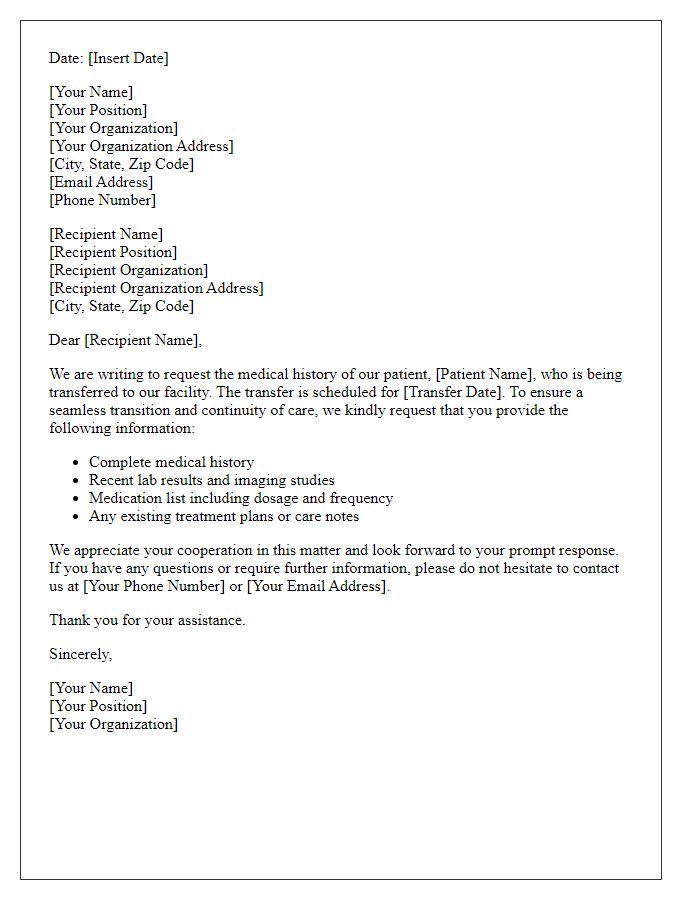
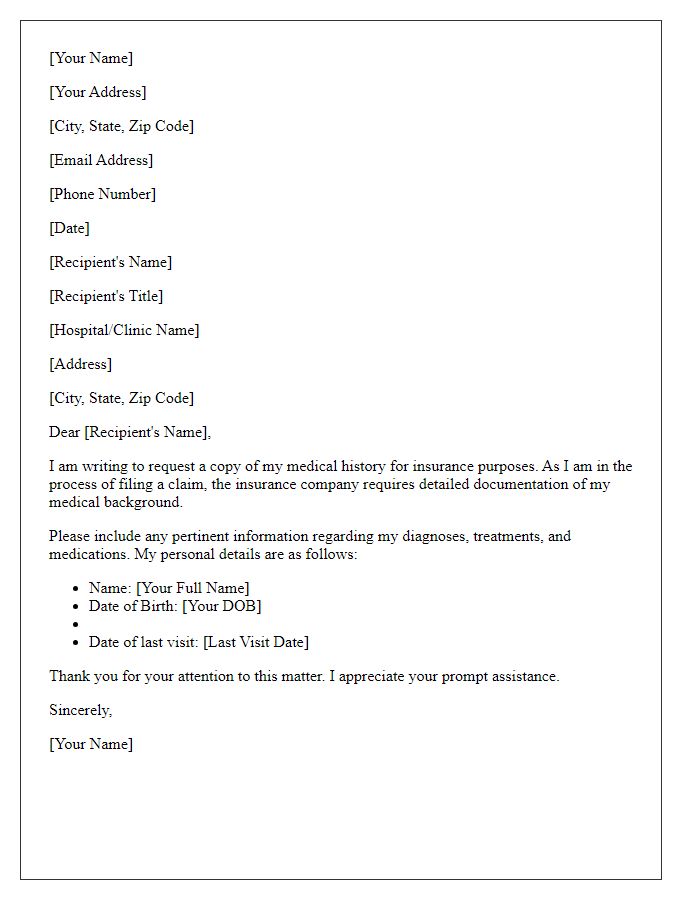
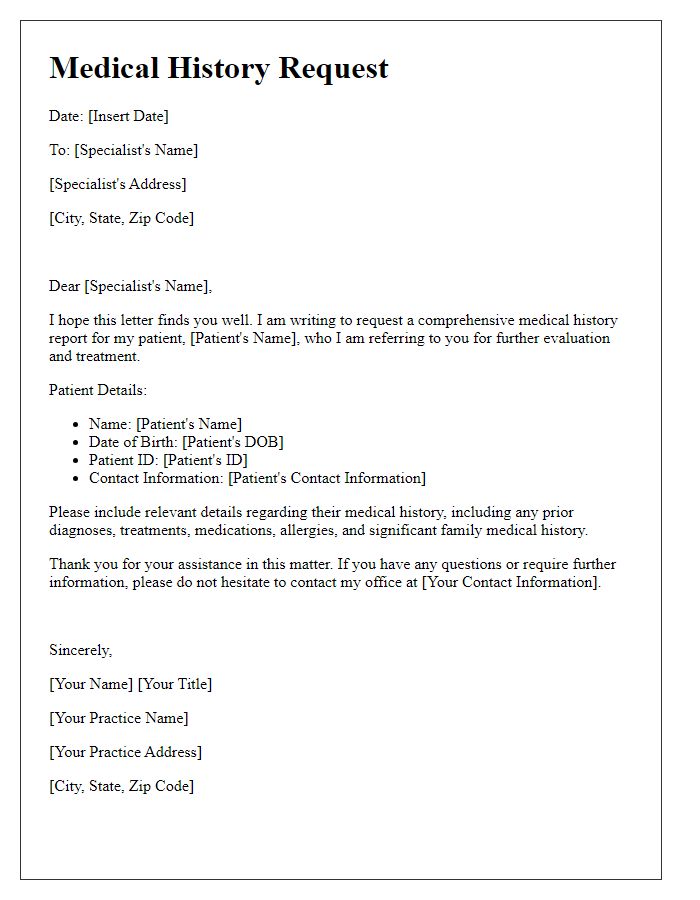
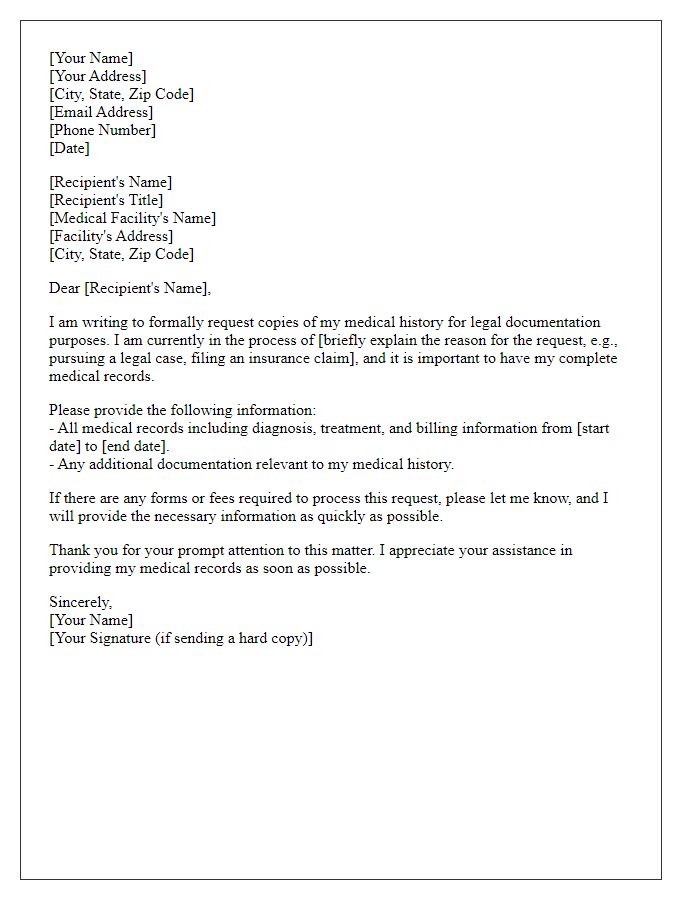
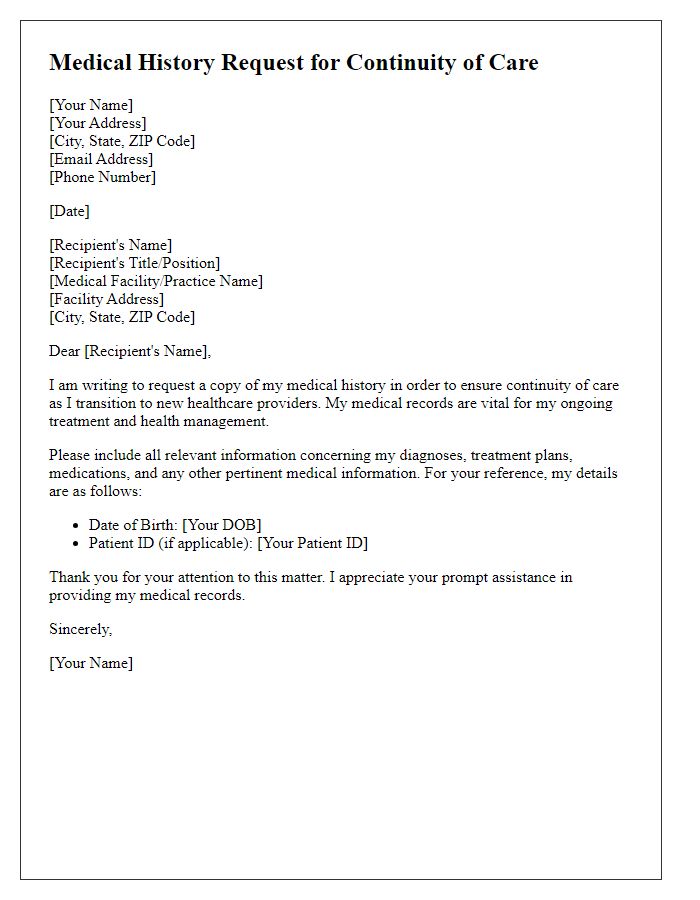
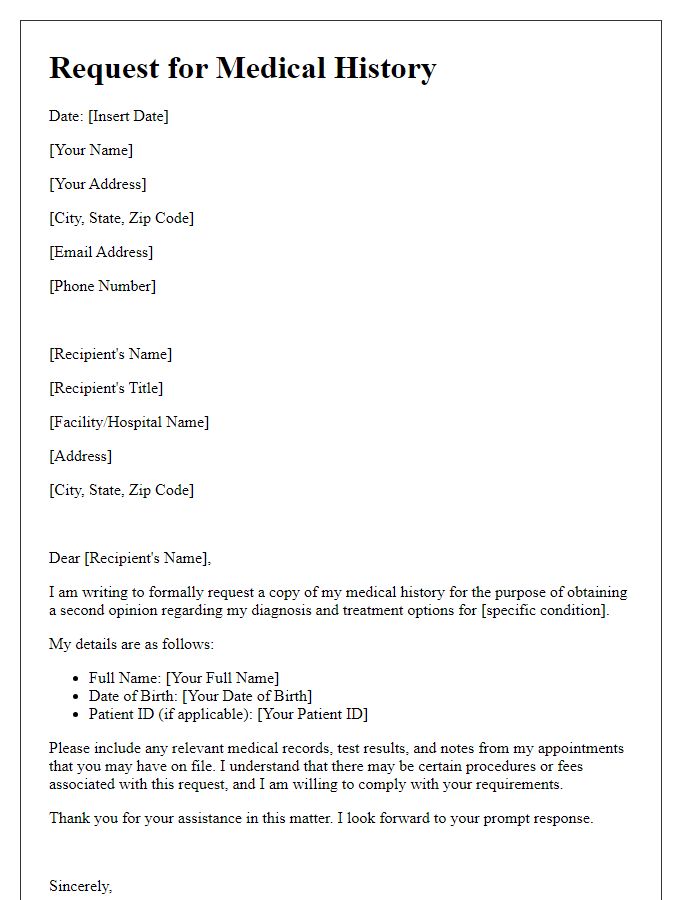
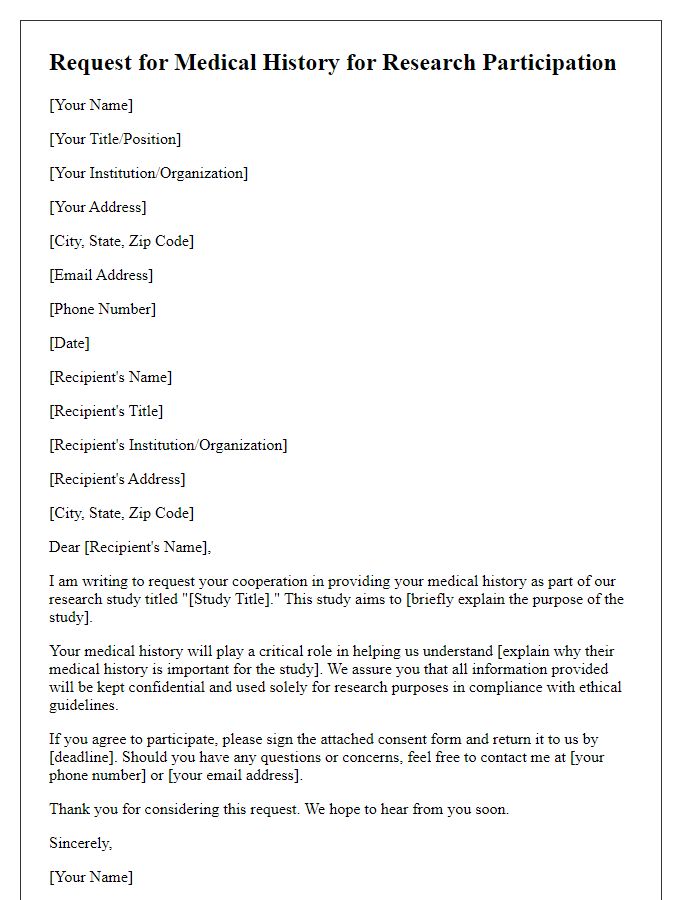
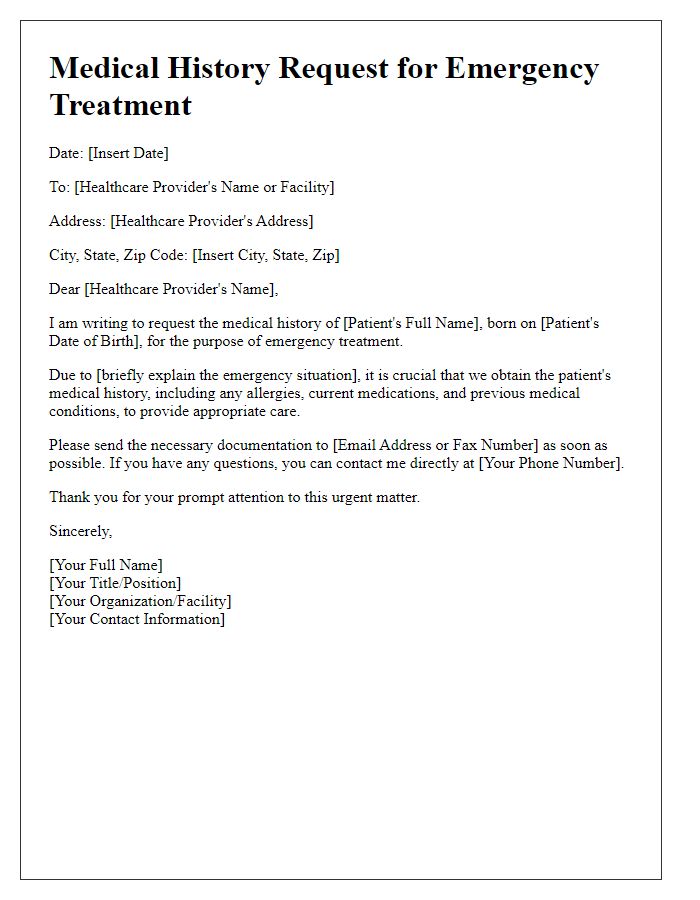
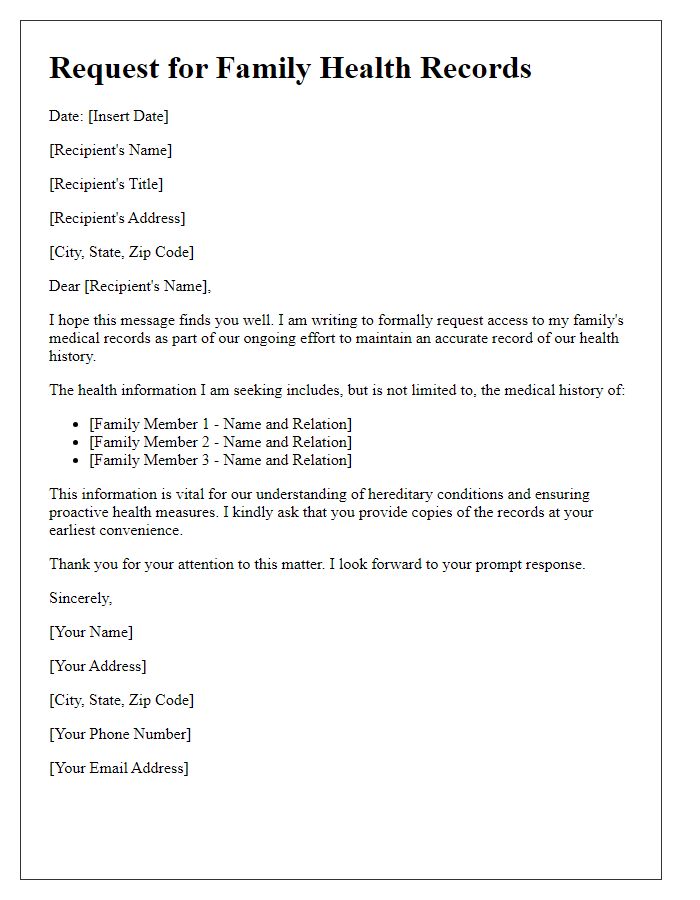
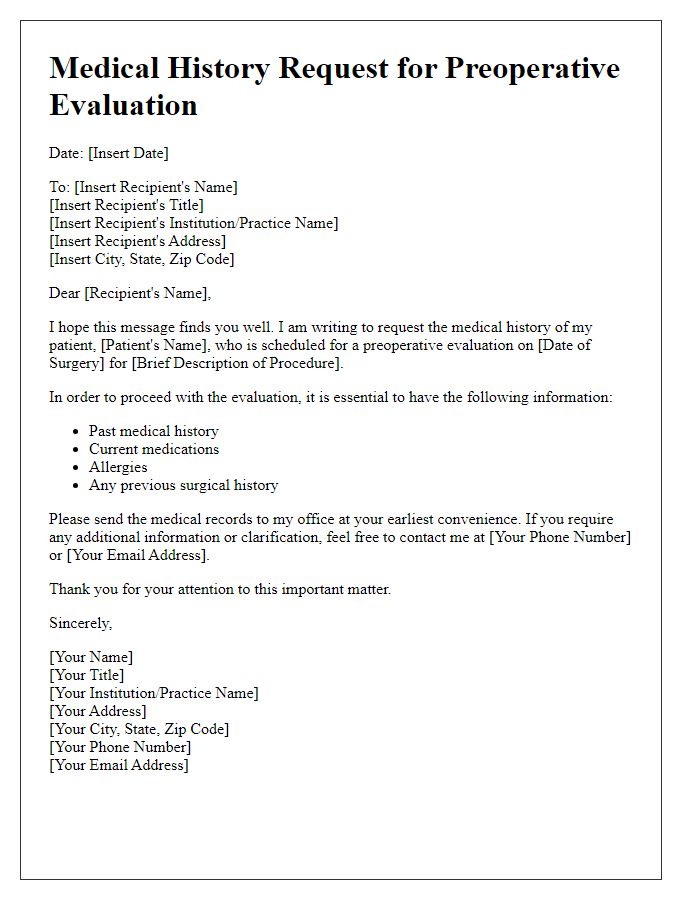


Comments